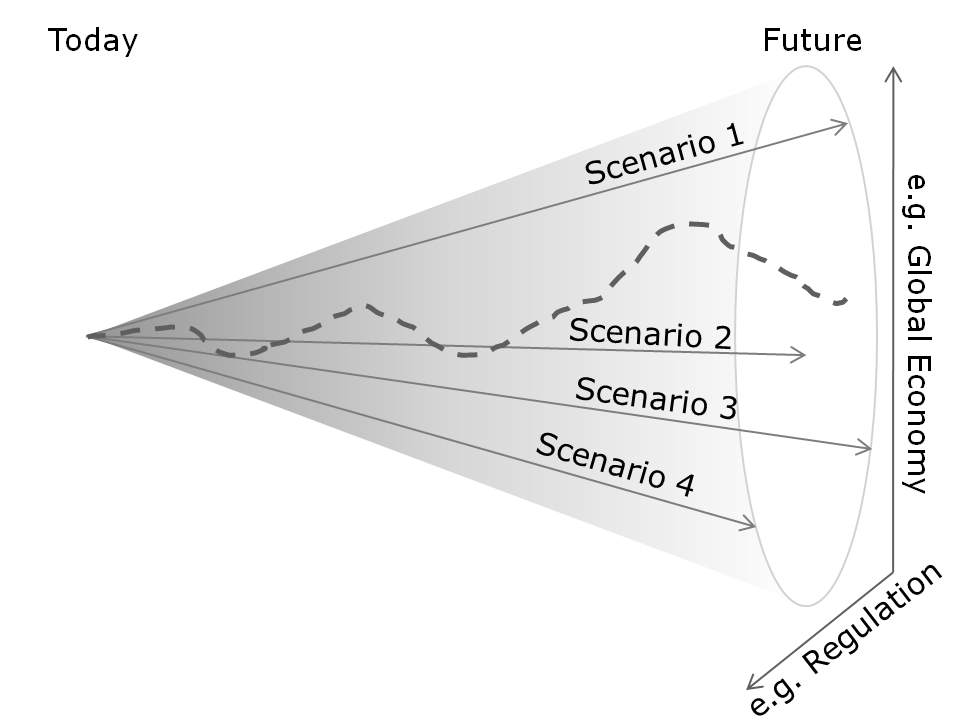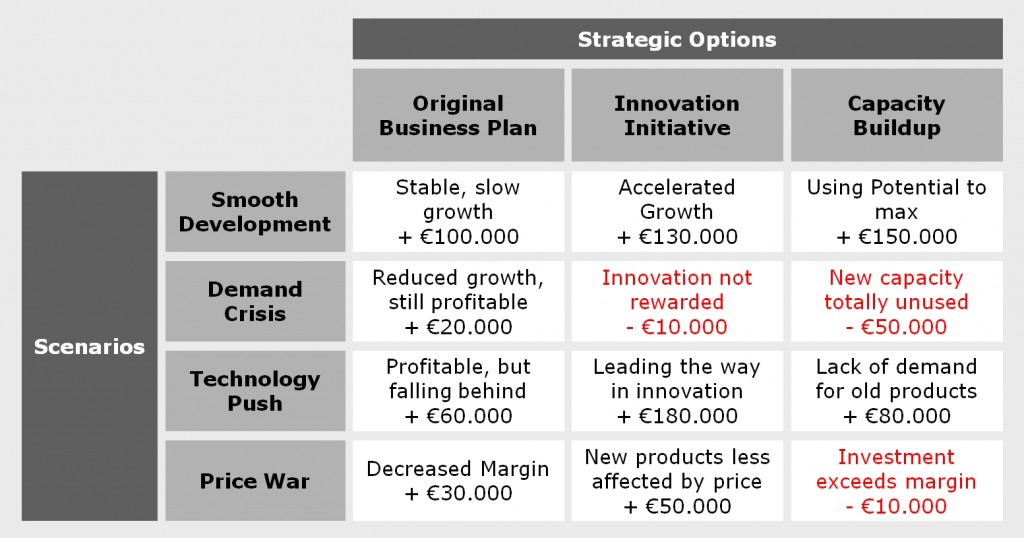Background
One thing right away: Decisions are always made at a specific point in time and by people facing specific advantages and disadvantages. Thus, a decision can only be ”right“ at this particular point in time and for that person. Whether this decision sustains for a longer period cannot be projected when it is being made. This insecurity concerning decision outcomes cannot be avoided by avoiding decisions as such. Not taking a decision also represents a decision – to do nothing. In the present economic moment dominated by instability, managers often decide to follow “visual flight rules“ – certainly the worst option.
Vancore helps its clients structure and implement breakthrough decisions. As a specialized management consultancy, we put the focus on the right issues to develop customer led solutions that clients own and are passionate about. Ultimately, clients work with us because they achieve a significantly higher Return on Decision RoD. How do I take the right decision? What do I need to consider? Whom do I have to consult at which time? Vancore has identified seven central aspects which considerably impact the quality of decisions.
1. People
They might really exist; ingenious single-minded decision-makers, people like Ferdinand Piëch and Jack Welch, who take so-called A1 decisions (i.e., they gather all important information and then decide self-sufficiently). Even though this decision might have been right, who takes care of the next step? Think about it carefully: What kind of expert knowledge do you need? Which interest groups need to be included? Is there resistance in the way? Change Management is not to be mentioned on the final page of a concept only. Start making changes now – right at the beginning of the decision-making process. Gather together the most brilliant people on the team and work on decision-making together.
2. Facts
NDF – Numbers, data, facts. We live in a world in which everything needs to make sense by the numbers. This leads to the result that often, a flood of data keeps overwhelming CEOs and directors. Whoever offers more data is on the safe side, is well-prepared and wins the presentation battle by pulling out slide 126.
Well, this all sounds nice. How about the relevance of data loads, however? This question is hardly being raised. Only when decision-critical findings emerge from information, the previous analysis and all the preparation were useful.
Be courageous and together with your team address the question of relevance: Which information is really important? Where do we find white spots in the map? Do we know the real causes of past problems? Do we have to know them in order to be able to decide? Go ahead and create a reliable basis of previous and current findings. Learn from the past. Set limits and try to avoid data overload. Do not take neglectful decisions but decisions that are well-balanced.
3. Systemic Procedure
A process is a logical sequence of certain steps. In the western world, this sequence usually proceeds from left to right, for example, from analysis via conception to implementation. Surprisingly, this logical sequence is followed less frequently the higher the respective decision is located in the corporate hierarchy. In addition, decision makers usually concentrate more on options and recommendations concerning content, not on the process of decision-making. Often, lively discussions on side-topics therefore end up being mixed with crucial debates on distribution partners, relocations, and expansion strategies.
It makes a lot of sense to define a structured process and to follow this process when making a decision with considerable impact. In the end, one will notice that many topics, if seen in combination, reveal a very different nature than in the case of single inspection. Above all, the works of nobel prize winner Daniel Kahneman show us that big decisions in iteration processes emerge from insight, criteria, and options. Such a successful process is always transparent, comprehensible, and robust enough to be repeated for a number of times. One conclusion therefore remains: A process can only function well if it is adhered to accordingly.
4. Insight
Many leadership circles equal soccer stadiums: Holding on to the ball, i.e., the total time someone has the floor, is what counts. Options for passing the ball are often ignored. Scoring, i.e., the final decision, is often neglected that way. Force yourself and your management team to draw specific conclusions. Engaging in discussions is nice but what are we to learn from them specifically? Where is the insight? Should we engage in the Chinese market? Which risks are connected to this decision? Which key capabilities are relevant? Does our portfolio need adjustment?
At the decision-making point, the leadership team needs to put its cards on the table by advocating comprehensible and communicable learning points. This is how you structure your decision step by step – seemingly random building blocks form to a structured pyramid. The crucial thing is that you and your employees can trace the decision-making process – it is the basis of successful implementation.
5. Authenticity
In the realm of “ringi seido“ (Japanese process of decision-making), management simply receives an impetus. Central problems are then handed down to the lower management levels to be solved. This triggers a circulation process including all the respective levels and departments in order to then seek a corporate consensus. This entire process is accompanied by “nemawashi.“ This concept aims at informally involving all necessary people previous to making a decision. In consequence, the actual decision turns into a more or less formal step.
In the West, however, decision-making is usually carried out differently. Although key decision makers and opinion leaders are being informed on a regular basis previous to a meeting, the actual decision itself is being „fought out“ in the meeting itself.
As consultants who steer this process, we notice that the really important topics are only discussed indirectly or not at all. “As long as I do not hurt you, you will not hurt me,“ is a tacit motto which reigns many of these procedures. What we are missing is the passionate discussion of issues, not of persons. Dissent and constructive criticism are healthy. Some companies, such as the BMW Group, have even included dissent as value in their guidelines. It needs to be allowed to struggle for certain key decisions. Authenticity in a discussion culture therefore represents a key factor. How often do you leave a meeting with the awkward feeling that the major roots of problems have not been targeted? This is when a team needs to be honest to itself: Are we really willing to confront the uncomfortable issues/people? Only the addressing of deeper matters and their solving can contribute to a decision-making process.
6. Common Ground
Everyone looks after themselves first. Unfortunately, this has to be the case, since performance systems often only consider the contribution of individuals or individual functions. However, the individual performance of single people hardly ever advances a corporation. Team process, however, take time. If done well, they create intensive self-identification with the organization and increase the motivation of employees. Team building does not happen accidentally. A short retreat – “we go to the countryside, hammer nails into planks and milk cows” – can trigger such a process. But what is the real value? The crucial question is: how important are culture and values to you?
7. Consistency
Often, we hear that companies invest 100 euros in conception, idea and strategy while only spending 10 euros for implementation planning and conducting. We do not understand why this is the case. Thus, Peter Drucker’s saying still holds true: “Culture eats strategy for breakfast.“ Paper is patient, as experience teaches us.
Success depends on consistent and stringent acting. And actions here mean sustainably consistent behavior. A strategic project needs to be prioritized within a transparent project portfolio with clear targets, milestones, and resources. This prevents the magical multiplying of “submarine“ projects in the CEO office, i.e., intransparent and costly ventures. In a world of limited resources, thus, saying “yes“ to a project at the same time means saying “no“ to many other things which one, nevertheless, would like to do.
Our Conclusion:
There is not the one recipe for successful decision-making. This is why we also discourage you from following quick and easy checklists (also see Sibony O. for McKinsey in Harvard Business Manager, September 2011).
It is possible, however, to make a decision which is right for oneself, although the final result cannot be projected. Just take our Seven Essences of Decision-Making to heart. Your company and your employees will appreciate it.
Reinhard Vanhöfen
Vancore Group GmbH & Co. KG


